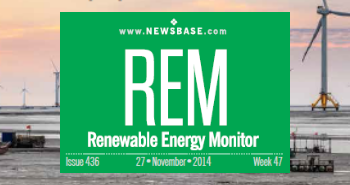OMV Petrom invests €560mn to produce sustainable fuels
_Cropped.jpg)
OMV Petrom, the largest integrated energy producer in Southeast Europe, announced it will invest a total of €750mn at its Petrobrazi refinery to produce sustainable aviation fuels (SAF) and biodiesel (HVO, or hydrotreated vegetable oil) – namely fuels that have a lower carbon footprint thanks to the use of green hydrogen in the production process.
Specifically, the company has made the final investment decision to build a €560mn SAF/HVO facility along with its two facilities for green hydrogen that are already being developed under a €150mn project with partial (€50mn) financing from the National Resilience Facility (PNRR).
The SAF/HVO production capacity was not specified.
The company says the investment will make it the first major producer of sustainable fuels in Southeast Europe.
Integrating green hydrogen (hydrogen produced by hydrolisis with the use of power generated in wind and solar plants) into sustainable fuels will result in at least a 70% reduction in CO2 emissions compared to conventional fuels, the company claims.
“Thanks to the investments we announced today, we will be able to replace imports with biofuels produced here in Romania,” said Radu Caprau, OMV Petrom executive board member responsible for refining and marketing.
While the “bio” in biofuels regards the use of vegetable oil as a raw material (in the HVO line of products), the use of green hydrogen will further reduce the carbon footprint.
OMV Petrom says that to this end, it took over a company, Respira Verde, that collects some 10 kt per year of cooking oil from the hospitality sector. Such amounts can, however, account for only a very small fraction of the (unspecified) production capacity of the HVO production.
The SAV/HVO plant will have an annual consumption of 11 kt of hydrogen, most of which will be provided by the two new green hydrogen production units.
The two hydrolysation units will have a total capacity of 55 MW (electricity sourced from wind and solar capacities), with a total annual production of green hydrogen estimated at around 8 kt.



Follow us online